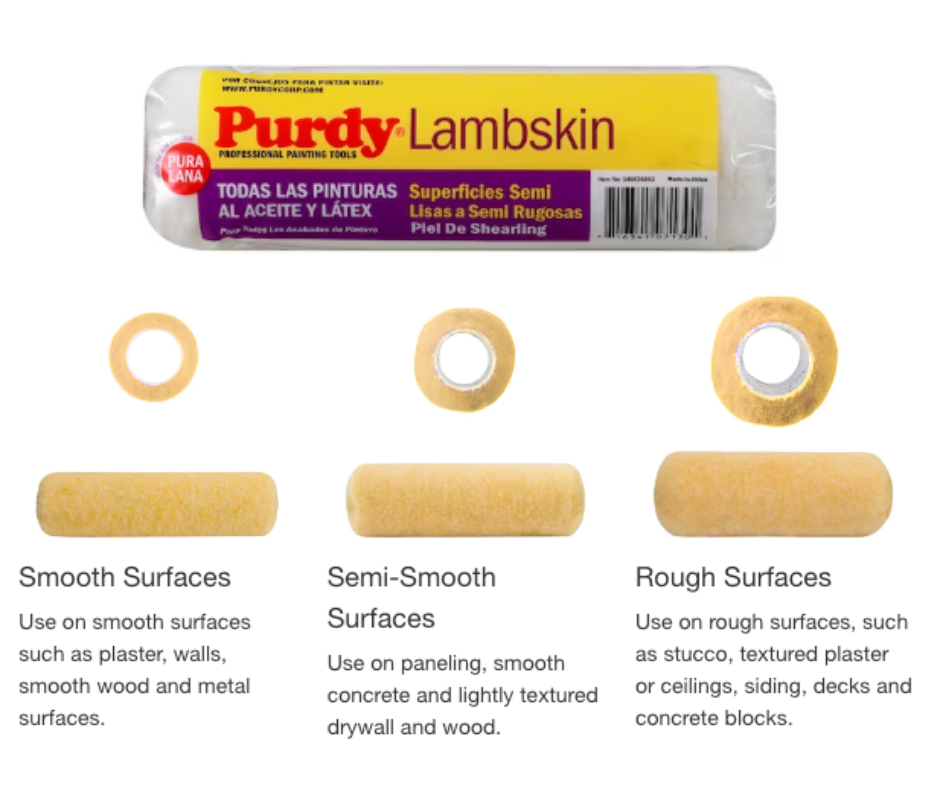Are you tired of looking at uneven, streaky paint on your walls and unsure how to fix it? You’ve come to the right place! This blog post will serve as your comprehensive guide on everything related to paint streaks. We will delve into the causes of these unsightly streaks, discuss preventive measures to keep your walls looking smooth and flawless, and most importantly, guide you on how to fix an already streaky paint job. No matter how daunting the task might seem, remember that every homeowner has the power to transform their living space. Stick with us, and let’s conquer the streaks together!
Several factors can lead to a streaky paint job. First, roller marks are a common culprit. These can occur when the paint roller isn’t fully immersed in the paint or is applied unevenly, leaving a patchy, streaky appearance once the paint has dried. Second, brush marks are another common cause of streaks. These can appear when a paintbrush is overloaded with paint or the paint is not applied in a consistent direction, resulting in visible brush strokes. Lastly, drips, runs, sags, and clumps can also lead to a streaky finish. These happen when too much paint is applied to a surface, causing it to drip or sag before it has a chance to dry, or when the paint is not mixed thoroughly, causing clumps to form and leave a bumpy, uneven surface.
Fixing Paint Streaks On Walls 101
Inconsistency in coverage is indeed a chief cause of paint streaks. This typically occurs when the amount of paint loaded onto your brush or roller varies with each application. Each time you dip your tool into the paint, try to ensure you’re picking up roughly the same amount of paint. Consistency is key here. Delivering the same amount of paint to the surface with each stroke will promote even coverage and help prevent those pesky streaks.
The mental and emotional state of the painter also plays a significant role. A flawless paint job requires focus and patience. It’s understandable to feel tired, frustrated, or even bored, especially when painting large areas. However, it’s crucial to maintain your focus on the task at hand. Inconsistent painting often occurs when the painter loses focus or rushes through the job. Remember, a good paint job is not a race, but a work of art. Take regular breaks to avoid fatigue and keep your spirits high. When you approach the task with patience and a positive mindset, the results will shine through on your walls.
Applying too much paint on a wall can result in unsightly paint streaks.
Controlling the amount of paint you apply to your walls is vital for a clean and consistent finish. Applying too much paint can lead to drips, runs and sags, which will result in an uneven and unattractive finish. To avoid this, the key is to use just enough paint to evenly coat your paint brush or paint roller, not overload it. Dip your paint brush or paint roller into the paint and then allow it to drip excess paint into the paint tray or paint can before bringing it up to your wall. This simple method ensures that the right amount of paint makes it onto your wall, preventing streaks and runs. Remember, patience is important in painting. Applying multiple thin coats will always yield a more attractive and durable finish than one thick coat. Pro Tip: Always allow each coat to dry fully before applying the next coat. This will give your paint job a smoother, more professional appearance.
Poorly Prepped Walls Can Lead To Paint Streaking
The condition of the surface you are painting significantly impacts the final appearance of your paint job. If your walls aren’t properly prepared, the paint may not adhere well, leading to unwanted streaks and irregularities. Any existing damage such as holes and dents should be addressed before you start painting. Patch and repair these imperfections using a suitable patching compound to ensure a smooth, even surface. It’s equally important to ensure that your walls are clean before applying paint. We recommend cleaning your walls thoroughly to remove any grease, dirt, dust, and oil, which could affect paint adhesion. Finally, applying a high-quality primer to your walls can create an optimal surface for paint adhesion and encourage even absorption, helping to prevent streaks and promote a flawless finish.
Using High-Quality Paint Will Help Avoid Paint Streaks
Not all paints are created equal. Investing in high-quality paint will significantly reduce the risk of streaks and provide you with a more professional-looking finish. Higher-quality paints have higher pigment levels, meaning they require fewer coats for an even finish, reducing the potential for overloading the brush or roller which can cause streaking. Additionally, these paints often have better flow and leveling properties, making it easier to achieve a smooth, streak-free finish. While these paints may cost more upfront, they will save you time and effort in the long run and give you a much better result.
Prevent Streaky Paint Jobs With Proper Technique
Proper technique is crucial for achieving a beautiful paint job without any streaks. When using a roller, start by rolling paint onto the wall in a W pattern and then filling it with horizontal strokes. This technique ensures even coverage and helps to eliminate any excess paint on the roller, avoiding streaks. When using a brush, hold it at a slight angle and use long, smooth strokes in one direction for consistent coverage. Avoid going back over areas that have already been painted as this can result in brush marks and unwanted streaks. Remember to always check your work from different angles and lighting to catch any potential streaks or imperfections.
Using The Right Tools / Paintbrush and Rollers
As in any art, painting your home beautifully and flawlessly requires the right tools. A high-quality lambskin roller, for instance, can be the difference between a streaky finish and the smooth, even coat you’ve been dreaming of. Unlike cheaper synthetic rollers, lambskin rollers hold more paint and release it evenly onto the surface. This means fewer dips into the paint tray, a more consistent application, and a smoother finish free from streaks and inconsistencies. Most professional painters, who stake their reputations on the quality of their work, are unanimous in their choice of a high-quality lambskin roller for painting interior walls. The same principle applies to paintbrushes. High-end brands like Purdy are preferred by professionals for their durability, paint-holding capacity, and for their ability to provide a smooth, even finish. A quality paintbrush can help you achieve a professional-looking finish, highlighting the importance of investing in good tools for the best result.
Choosing The Right Nap Size / Roller To Paint Your Walls
Choosing the appropriate nap size for your paint roller is crucial to achieve a flawless finish. The texture of your wall largely determines the suitable nap or pile length. For smoother walls, a roller cover with a short nap, such as a 3/8 inch, is ideal. This length guarantees a smooth and consistent finish, as it can easily roll paint across the flat surface without leaving excess behind. On the other hand, for more textured surfaces, a roller cover with a longer nap, such as a 3/4 inch to 1 inch, is recommended. The extensive pile length allows the roller to reach into the crevices and cover more surface area, ensuring the textured surface is thoroughly painted. Understanding and making the right choice based on your wall texture will result in a more professional-looking paint job.
Preventing Paint Streaks: Proper Prep & Proper Painting Techniques
- ” value=”2″>Let Coats Of Paint Fully Dry Before Painting More: It’s essential to allow each coat of paint to dry fully before applying the next coat. This prevents unwanted streaks and gives your paint job a smoother, more professional appearance.
- ” value=”4″>Check Your Painting Techniques – Use The Right Amount Of Pressure: Too much pressure can cause the paint to spread unevenly, leading to streaks. Apply just enough pressure to ensure the paint is absorbed by the surface.
- ” value=”6″>Paint In One Direction: Painting in one direction ensures a steady, even stroke, reducing the chance of streaks. This also helps maintain a consistent texture throughout your paint job.
- ” value=”8″>Two Coats Of Paint Should Be More Than Enough: Applying more than two coats of paint can potentially lead to an uneven finish and streaks. Two coats are typically sufficient to achieve an even, beautiful finish.


